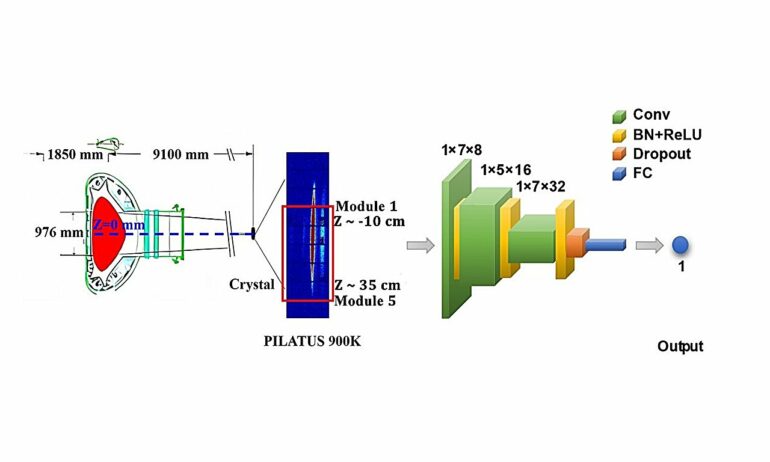In fusion experiments, understanding the behavior of the plasma, especially the ion temperature and rotation velocity, is essential. These two parameters play a critical role in the stability and performance of the plasma, making them vital for advancing fusion technology. However, quickly and accurately measuring these values has been a major technical challenge in operating fusion reactors at optimal levels.
A research team at the Hefei Institutes of Physical Science of the Chinese Academy of Sciences, led by Prof. Lyu Bo, has recently applied neural networks to X-ray Crystal Spectroscopy (XCS) for rapid inference of ion temperature and rotation velocity profiles in the Experimental Advanced Superconducting Tokamak (EAST) fusion device. Their results were published in Nuclear Fusion.
Two types of models were created: Deep Neural Networks (DNN) and Convolutional Neural Networks (CNN), both capable of real-time calculations. Validation tests confirmed that their predictions closely matched the actual data.
One of the key outcomes of this study was the significant speed improvement offered by DNN. It’s more than 10 times faster than traditional methods, providing quick results without compromising accuracy. It demonstrated the possibility of automatically assessing the range and errors of the input data, paving the way for more intelligent diagnostic systems in the future.
The CNN models successfully predicted line-integrated rotation velocity profiles and localized radial ion temperature profiles, further proving their reliability. This model can be adapted to various diagnostic systems beyond the current study, making it highly useful for broader applications in fusion research.
This research enhances the accuracy and speed of predicting ion temperature and rotation velocity profiles in fusion devices, while offering adaptable, automated solutions for broader fusion applications, according to the team.
More information:
Zichao Lin et al, Prediction of plasma rotation velocity and ion temperature profiles in EAST Tokamak using artificial neural network models, Nuclear Fusion (2024). DOI: 10.1088/1741-4326/ad73e8
Provided by
Chinese Academy of Sciences
Citation:
Neural networks boost fusion research with rapid ion temperature and rotation velocity predictions (2024, October 8)



